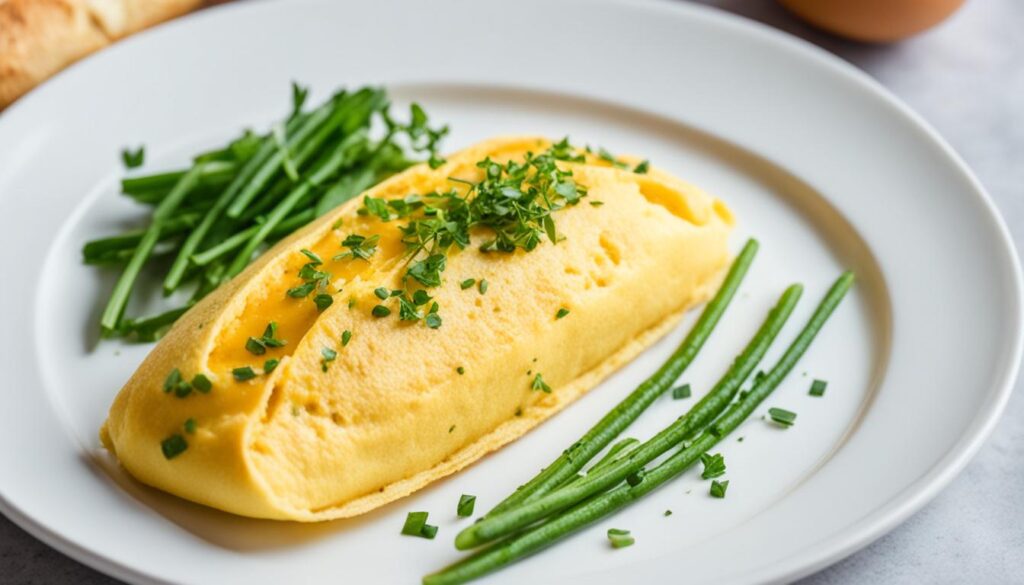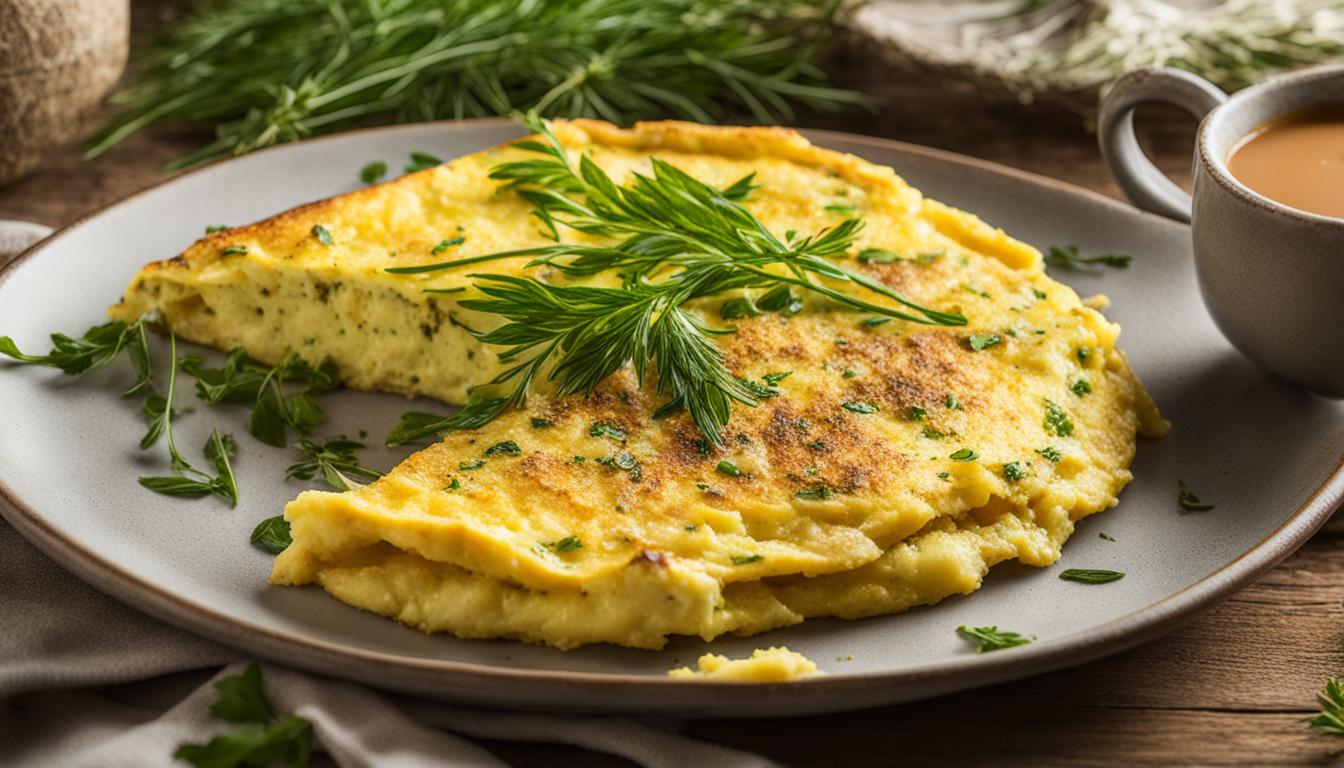Are you ready to elevate your breakfast game with a taste of French cuisine? Look no further than the classic French omelette, a dish that showcases the finesse of French cooking techniques and the simplicity of a traditional omelette. But what makes a French omelette different from the ones we are used to? And what is the secret behind achieving that fluffy texture? Join us as we explore the art of making an authentic French omelette and reveal the key to its perfection.
What Makes a French Omelette Different?
French omelettes stand apart from their American counterparts in terms of their unique characteristics and preparation techniques. While American omelettes are often rustic and overstuffed, cooked until fully set and browned, French omelettes possess a delicate and pale gold exterior with a moist and creamy interior. This subtle distinction showcases the finesse and mastery of French cooking techniques, making the French omelette a true culinary treasure.
The Legend and Test of the French Omelette
The French omelette has a storied place in culinary legend. Legend has it that French chefs would administer what came to be known as the omelette test as a means to evaluate the skills and attention to detail of prospective cooks. This test served as a way to assess various aspects of culinary expertise, including cleanliness, efficiency, pan handling, and the ability to create a perfect almond-shaped omelette. Integral to this test was the use of a carbon steel pan, known for its perfect nonstick surface, which was essential in achieving the desired texture and appearance of the omelette.
Choosing the Right Pan for a French Omelette
Why the Choice of Pan Matters
The success of a French omelette hinges on the choice of pan. The right pan ensures a smooth and effortless cooking experience, allowing the omelette to slide out easily without sticking. It contributes to achieving the perfect texture and appearance, bringing your omelette success to new heights.
Traditionally, carbon steel pans were the go-to option in restaurant kitchens due to their excellent nonstick qualities. However, these pans require meticulous handling and maintenance to maintain their nonstick surface. For home cooks, the preferred choice is a nonstick skillet. These pans offer convenience and ease of use without compromising on the desired nonstick properties. They are widely available, affordable, and come with a fresh nonstick coating that ensures reliable performance.
The Ideal Pan Size
When choosing a pan for a French omelette, consider an eight-inch nonstick skillet. This size is ideal for a three-egg omelette, providing enough space to properly cook and fold the eggs. It ensures that the omelette fits comfortably on a plate, allowing you to present your masterpiece with elegance.
Whether you’re a professional chef or a home cook, investing in the right pan is essential for omelette success. The nonstick skillet, a staple in restaurant-kitchen equipment, is the perfect choice for achieving the delicate perfection of a French omelette. With its nonstick coating and convenient size, this pan will become your trusted companion in creating exquisite omelettes.
The Technique of Making a French Omelette
Creating a perfect French omelette requires mastering the French omelette technique. Let’s go through the steps to achieve a delicious and visually appealing result.
Beating the eggs
To start, beat the eggs until no traces of visible white remain. This ensures a smooth and consistent texture in the omelette. Season the eggs with your preferred herbs, salt, and pepper for added flavor.
Temperature control
Next, heat the pan at a moderate temperature. The key is to provide enough heat to cook the omelette thoroughly without browning the butter. This delicate balance ensures the perfect texture and taste.
Butter foaming
Once the pan is heated, add the butter and allow it to foam without browning. This step is crucial for achieving the characteristic silky and luxurious texture of a French omelette.
Folding and rolling
Now, gently stir the eggs in a circular pattern using a fork or spatula. This allows for even cooking and creates light curds in the omelette. As the eggs start to set, fold and roll the omelette to create a compact shape.
Plate presentation
Finally, carefully flip the omelette onto a plate with a smooth surface. Add a small pat of butter on top to give it a glossy finish. The technique of making a French omelette is not only about taste but also about the visual appeal.
By following these steps, you can master the French omelette technique and create a flawless omelette that will impress your guests or make for a delightful breakfast treat.
A Classic French Omelette Recipe
To make a classic French omelette, we’ll need a few simple ingredients: fresh eggs, unsalted butter, grated parmesan or a vegetarian alternative, fresh herbs like tarragon, chives, and chervil or parsley, and finely grated gruyère cheese.
The first step is to whisk the eggs with a little water and salt. This helps to create a fluffy texture in the omelette.
Next, heat a nonstick skillet over medium-low heat and add a knob of unsalted butter. Once the butter has melted and is foaming, add the beaten eggs to the pan.
Using a silicone spatula, gently stir the eggs in a circular motion. This motion helps to create small curds and ensures even cooking.
As the eggs begin to set but are still slightly runny, sprinkle the grated parmesan, fresh herbs, and gruyère cheese evenly over the surface of the omelette.
Continue cooking the omelette until it is just set but still creamy in the center. This should take about 2-3 minutes.
Now comes the tricky part – folding the omelette. Using the spatula, carefully lift the edge of the omelette and fold it over itself into a cylinder shape. This process creates a neat and uniform omelette.
Once folded, transfer the omelette to a plate. You can give it a final touch by topping it with a small pat of butter and a sprinkle of fresh herbs.
Voila! Your classic French omelette is ready to be served. Enjoy it as a hearty breakfast or a light lunch, accompanied by a side of fresh salad or crusty bread.

Variations and Tips for French Omelettes
A classic French omelette is delicious on its own, but you can also experiment with different fillings to add extra flavor and texture. Consider incorporating ingredients such as sautéed mushrooms, diced bell peppers, cooked ham, or smoked salmon.
If you prefer a lighter version of the omelette, you can substitute whole eggs with egg whites or a combination of whole eggs and egg whites.
When cooking the omelette, make sure to control the temperature of your skillet. A moderate heat ensures a perfectly cooked omelette without any browning.
Remember, practice makes perfect when it comes to creating the ultimate French omelette. Don’t be discouraged if your first attempt is not flawless. With time and experience, you’ll master the art of making this classic dish.
Variations and Tips for French Omelettes
While a classic French omelette is delicious on its own, there are endless possibilities to explore when it comes to fillings, creating exciting variations that add extra flavor and texture. Here are some popular omelette fillings that will take your French omelette to another level of deliciousness:
- Cheese: Experiment with different types of cheese, such as gruyère, cheddar, or feta, to add a rich and creamy element to your omelette.
- Herbs: Fresh herbs like tarragon, chives, and parsley can elevate the flavors and add a fragrant aroma to your omelette.
- Vegetables: Sauteed mushrooms, spinach, bell peppers, or onions can provide a burst of color, nutrients, and a delightful crunch.
- Cooked Meats: Crumbled bacon, diced ham, or cooked sausage can add a savory and satisfying touch to your omelette.
Feel free to get creative with your omelette fillings by combining different ingredients or even coming up with your own unique combinations. The possibilities are endless!
If you have dietary restrictions or preferences, don’t hesitate to make ingredient substitutions. For example, if you are lactose intolerant or follow a vegan diet, you can use plant-based cheese alternatives or skip the cheese altogether. You can also experiment with substituting traditional ingredients with healthier alternatives, such as using egg whites instead of whole eggs or olive oil instead of butter.
To ensure the best results, it is crucial to use fresh, high-quality ingredients. This will enhance the flavors and overall taste of your French omelette. Additionally, pay attention to cooking tips that can help you achieve a perfect omelette:
- Temperature Control: Maintain a moderate heat to prevent overcooking or browning of the eggs. This ensures a velvety and delicate texture.
- Folding and Rolling: Master the technique of folding and rolling the omelette to create a compact shape and a beautifully presented dish.
- Proper Seasoning: Don’t forget to season your omelette with salt and pepper or other desired spices to enhance the flavors of the ingredients.
- Experimentation: Don’t be afraid to experiment with different techniques and cooking styles to find your perfect French omelette, be it slightly runny or fully set.
Remember, making a French omelette is an art, and practice makes perfect. So keep honing your skills and enjoy the process of creating a delightful culinary masterpiece!
Serving and Enjoying a French Omelette
A French omelette is a delightful breakfast or brunch dish that is best served immediately after cooking. Its smooth and moist texture is a true culinary pleasure. To enhance the presentation of your French omelette, you can tuck in the ends or fold it in half for a neat finish. This simple technique adds an elegant touch to the dish.
When serving a French omelette, consider accompanying it with a side of fresh salad, crusty bread, or a light vinaigrette. These accompaniments complement the flavors of the omelette and create a complete and satisfying meal. The crispness of the salad or bread adds a contrast to the softness of the omelette, while the vinaigrette brings a burst of tangy flavor.
Take a moment to savor the flavors of French cuisine as you enjoy the simple elegance of a classic French omelette. The combination of fluffy eggs, creamy texture, and delicate flavors is a true culinary experience. Whether you serve it for breakfast, brunch, or any other occasion, a French omelette is sure to impress.
